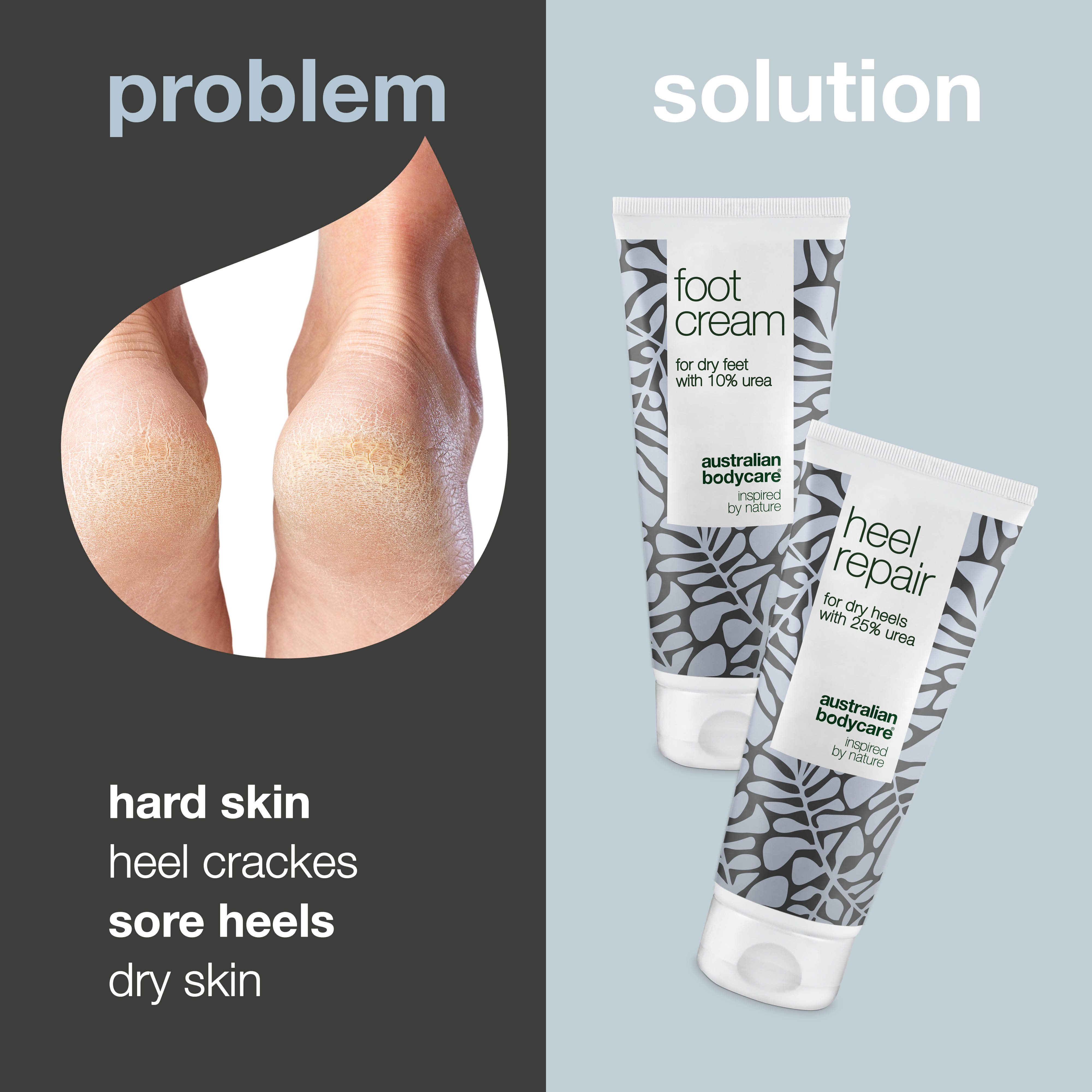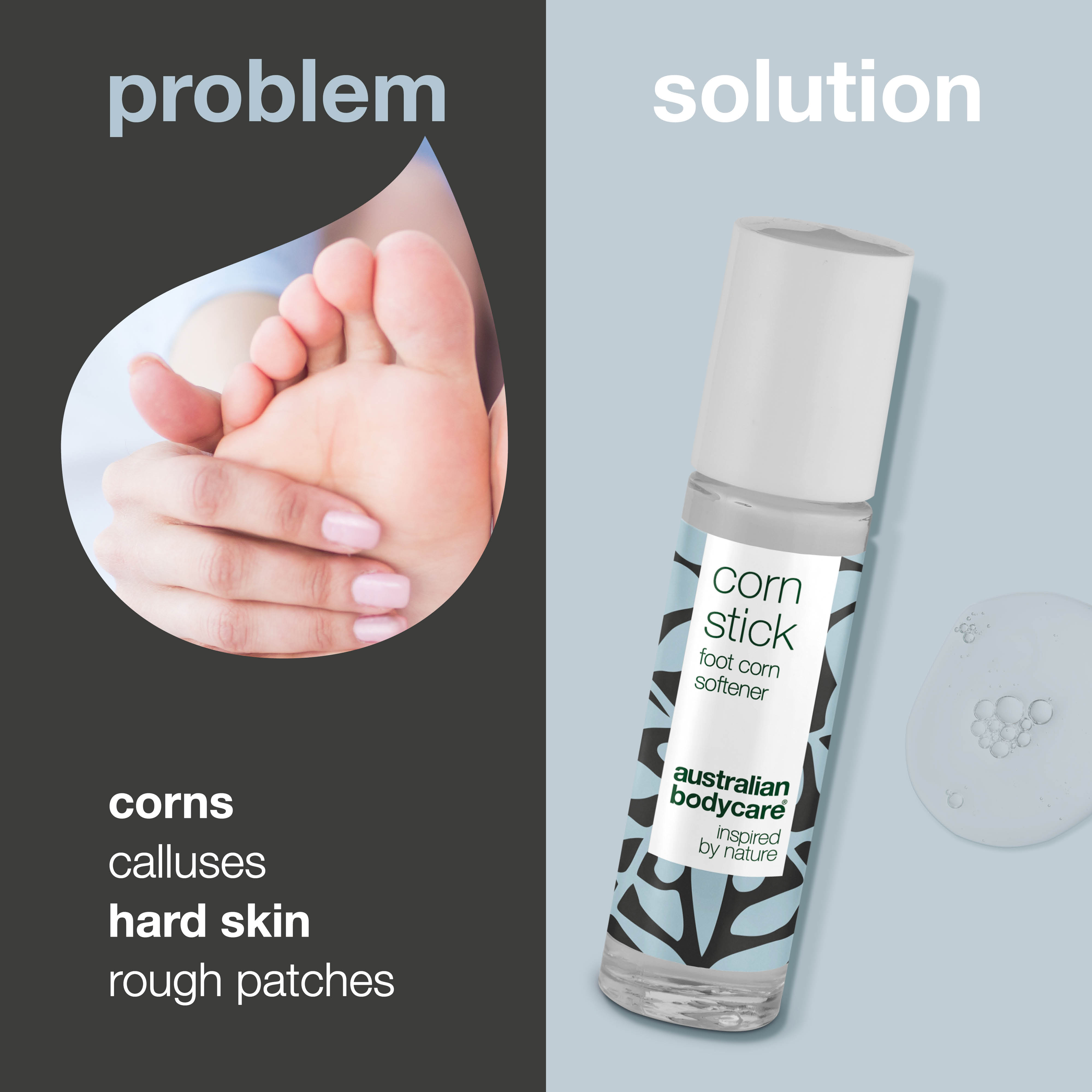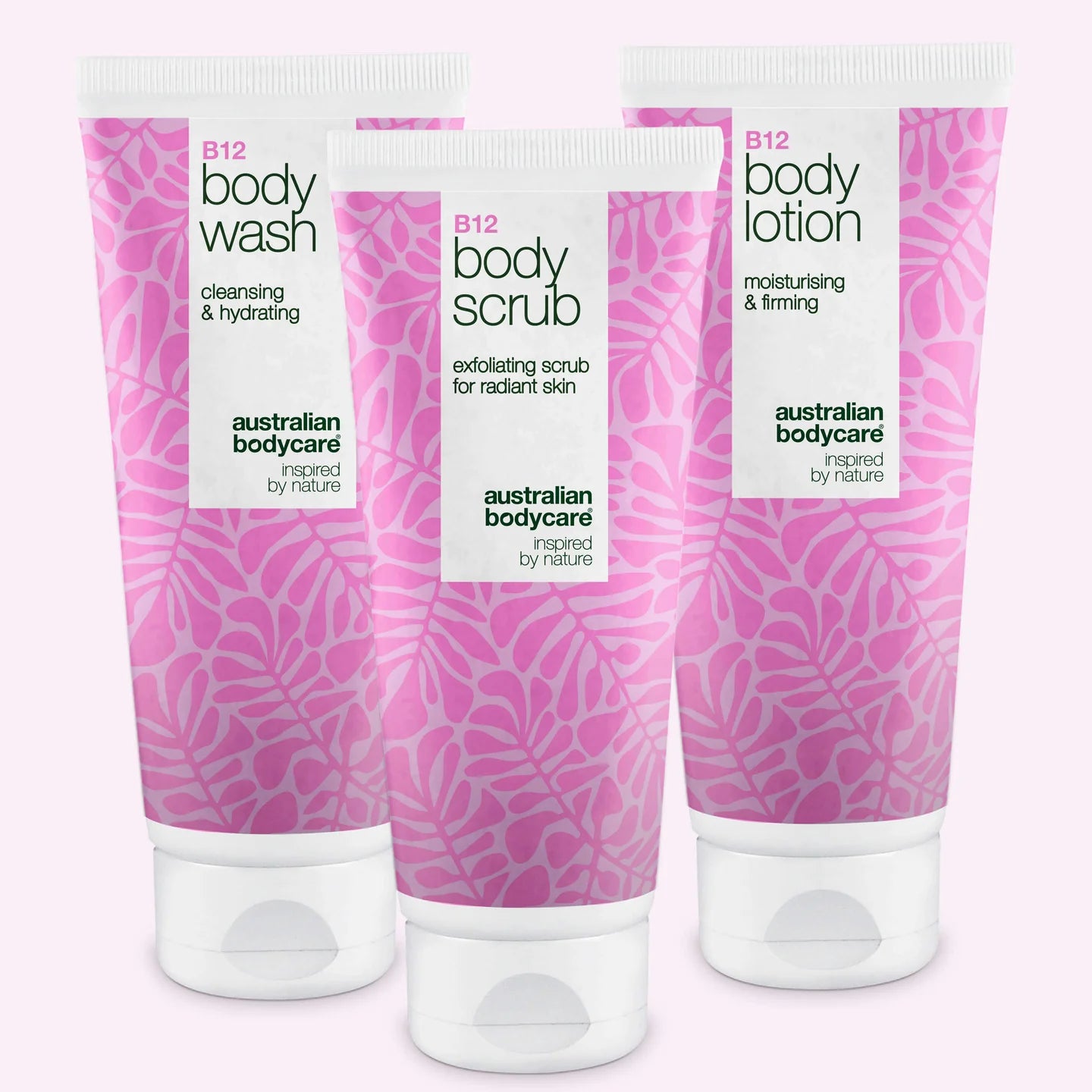Hard skin on feet – How to remove hard skin from feet
Most people have had hard skin on their feet – some to a greater extent than others. This is especially true for people who have physically hard work, where the skin becomes worn and stressed by standing all day. Hard skin is mostly normal on your feet, but it can also occur on most places on the body and is therefore also very normal on the hands.
In other words, hard skin is a very common condition that most people experience. Learn more about why you get hard skin and how to get rid of it so you can step into the future with baby soft feet.
Table of contents
How do you remove hard skin on your feet?
If you have hard skin on your feet, you probably know how it is not flattering to wear a pair of open shoes when the sandal season arrives. That’s just how it is.
Although hard skin is irritating and bothersome, it is not dangerous if it does not cause pain. Yet women in particular want to get rid of the hard skin on their feet. And in fact, it’s not that hard at all. But it requires a slightly different treatment than you might think. Many women are used to soaking their feet in a warm foot bath for hours, followed by a hard rub with a pumice or foot file.
If you file the dead skin off your feet, then you are rightly removing the problem in an instant. But in the long run, you’ll just be making the problem worse. When you file or scrape the skin off with a pumice stone or foot file, you stimulate the skin that simply causes it to grow even firmer on the feet. And that wasn’t the point of it all.
How to remove hard skin from feet
1. Scrub
Start with a good scrub to the feet against the hard skin. Use Australian Bodycare body scrub which gently removes dead skin cells so that subsequent care penetrates better. Massage your feet well with the scrub and you are ready for step 2.
2. Footbath for hard skin
Foot baths are effective in softening the skin on the feet. Fill a bowl with warm water. Add some foot bath oil and Tea Tree Oil and enjoy 10 minutes of pure relaxation with your feet in the water. Dry your feet well after the foot bath.
TIP: If you have very hard skin on your feet, you can use something as simple as a kitchen sponge to exfoliate the dead skin cells with the coarse side of the sponge after the foot bath. It is a gentler way to bring them to life than with foot file and pumice. However, remember that you need to have a certain amount of patience. Hard skin is not removed in one day, so be sure to start the process well in advance if you plan to wear sandals for an occasion.
3. Apply cream to hard skin on the feet
To successfully treat hard skin on your feet, it is essential to use a good cream after your foot bath. For example, use Australian Bodycare Foot Cream, which is an intensive repairing formula for dry and damaged skin.
The cream gives your dry feet a moisture boost to make them stronger and better at withstanding damage. Hard skin is formed when the skin becomes dry, and when it does so, it is more susceptible to new injuries because it is not strong enough to prevent them.
Foot Cream helps rebuild your skin so you can get the softness back. With natural ingredients such as Australian Tea Tree Oil, the cream effectively counteracts bacteria, allowing the skin to heal faster, while witch hazel effectively closes the pores of the skin and prevents it from drying out. Gently apply the cream to your dry feet in massaging motions.
Use it at least once a day, but preferably twice, to give your hard skin the best first aid. Apply it morning and evening. It does not become greasy and penetrates the dry skin quickly.
Why do you get hard skin, calluses and corns?
The skin is the largest organ of the body and it consists of three layers: epidermis, dermis and subcutaneous tissue. When you get hard skin, it is because the epidermis layer gets thicker. Your skin is thinnest on the eyelids and back, while thickest on the palms and soles of the feet. Therefore, it is also typical where people are affected by hard skin.
Hard skin is common in many people. It occurs because your skin is exposed to pressure for a long time. Exposing the skin on your hands or feet to an overload of pressure for an extended period of time will damage the skin and turn it quite hard.
If the skin only receives normal loads in small doses, it will maintain its soft texture. But when the skin is overloaded, it begins to thicken – and that’s what we know as hard skin. So, if you have hard skin, it is your body’s natural way of telling you that something is wrong and that you need to repair the damaged skin.
Calluses on the big toe, heels, feet and hands
There are certain places on the body where the skin is particularly prone to hard skin formation. This is especially true of the big toe, heels, feet and hands. It is because of these body parts that the skin is typically put under extra pressure or extra stressed so that the hard skin is formed. And there may be several reasons why.
Hard skin on hands
If you work out in a gym where you lift weights, you will probably find that your palms are making hard skin callouses. They do this because the skin is regularly pressured in the same place – and it can’t withstand it.
Hard skin on your hands also typically occur if you work physically in a manual labour role. Masonry and carpentry works are examples of occupations where the skin of the hands is often subjected to severe pressure. Over time, it causes severe hard skin formation in the palms, because carpenters and masons expose the skin to high pressure daily – for example, by screwing, grooving, etc.
Hard skin on big toe
If you walk in the wrong footwear that does not fit your feet correctly, for example, if they are too small, the shoe will sit and press on your toe, giving you hard skin formation. The same is true if you often wear pointed shoes that are too narrow around the foot. The narrow shape presses your toes together to expose them to a great deal of pressure, which is why over time they also create hard skin on the big toe.
The same goes for those with a crooked big toe that bends towards the toe next to it. The inward bent big toe often causes problems with bruises which, like the big toe, form hard skin. It creates a constant pressure on the toe, so that the skin reacts by forming a thick corn.
Hard skin on heels
Most of us know the feeling of dry and cracked heels and feet being worn in sandals. After a long winter wrapped in shoes and boots, the heels may have softened and instead become dry and rough when they’re suddenly pressed to hard soles.
Wrong summer footwear can cause the hard skin on the heels. Some sandals and summer shoes are designed with high edges around the heel. And if the sandal is even a little too small, you press your heel against the edge at every step – that friction creates hard skin.
Hard skin under your foot
Like hard skin on the big toe and heels, it is often the footwear that causes hard skin under the foot. If you walk a lot, the skin under your foot is constantly exposed to stress – especially if your footwear is not right for your foot.
If you have low arches or frequently wear high heeled shoes, there is a greater tendency to form hard skin under the foot. It applies pressure to the feet in exposed places and it also means the feet need extra support to avoid uncomfortable pressure. A shoe insert or can help restore the right foot position, as well as supporting and relieving the feet, giving you less pressure that can cause hard skin under the foot.
The result after 2 weeks of using Heel Repair & Foot Cream


Corns on the feet
Hard skin is a troublesome problem, but if you do nothing about it, it can develop into corns. Corns are a disorder that occurs if the hard skin is still exposed to pressure and heavy loads. In that case, the skin will build up layers of compact dead skin cells.
This means that the hard skin will lump together in small bumps in smaller areas – especially under the feet and on the toes if your shoes continue to press. Eventually, the hard lump is pushed into the skin and this is where it starts to cause pain because it presses against the sensitive internal layers of the skin.
Prevention of calluses and corns
The best way to treat calluses and corns is through prevention. And in fact, it doesn’t take much care to keep your skin healthy. Make sure to moisturise your skin with a good moisturising cream every day. Make it a habit to put the cream on the bedside table so you remember it before going to bed.
It is also important that you find the right footwear for your feet so that the shoes do not compress your feet. Wearing pointed shoes once in a while won’t hurt, but you have to keep it to a minimum so your feet get plenty of room.
Put aside those pointed, narrow shoes for when you go to a party, and wear well-worn everyday footwear in-between. In addition, it is a good idea to invest in an innersole or foot sole for your shoes, so that you create a soft base for the foot that will cushion and decrease the pressure from heavy weights.











